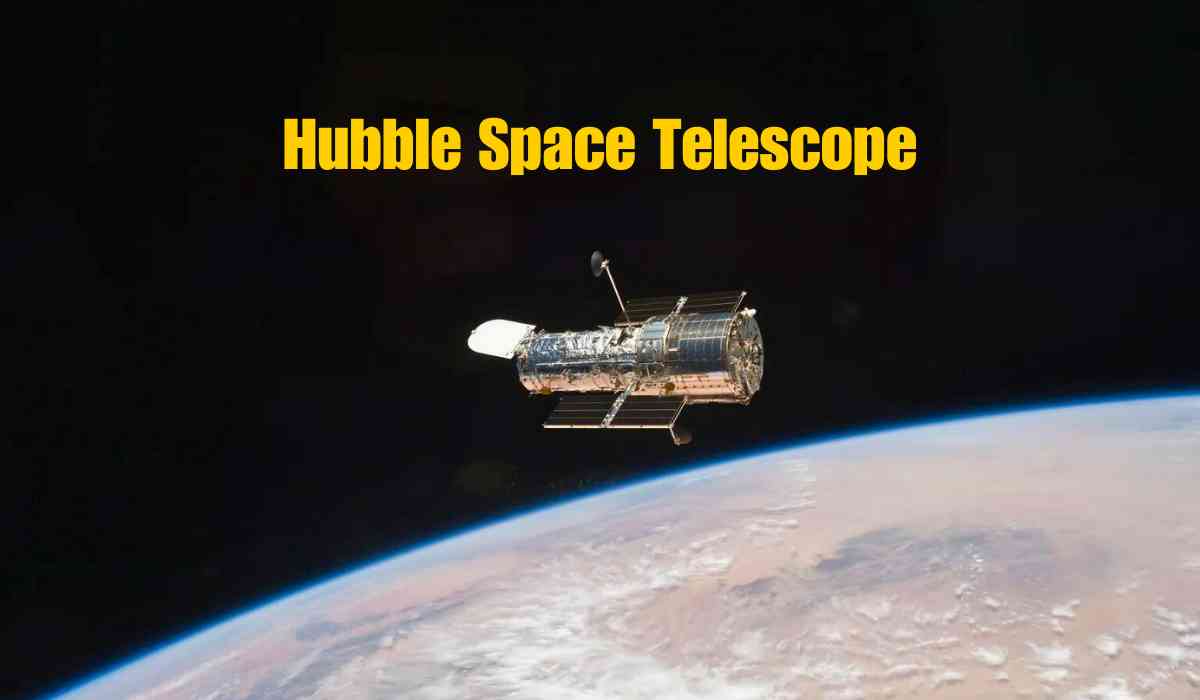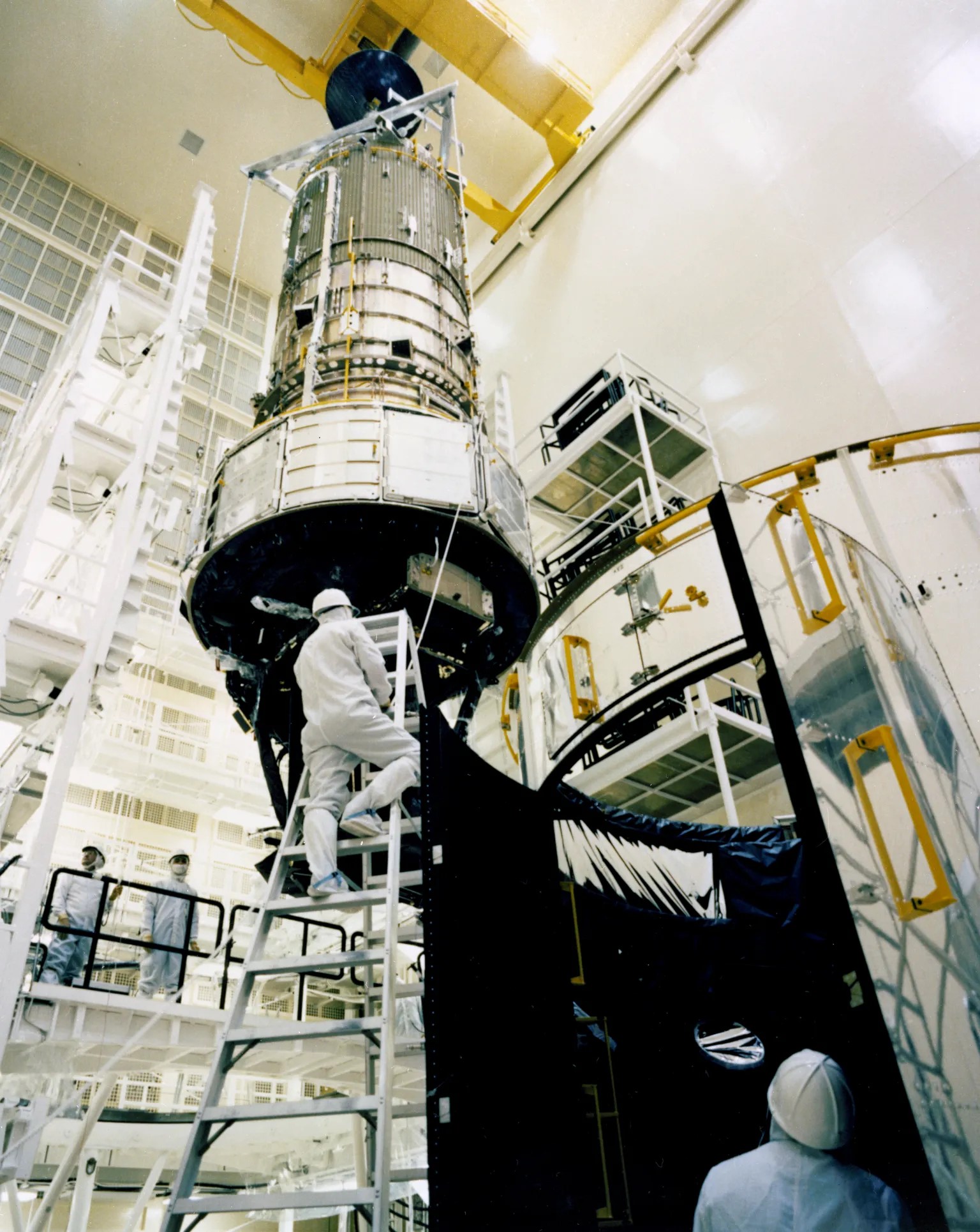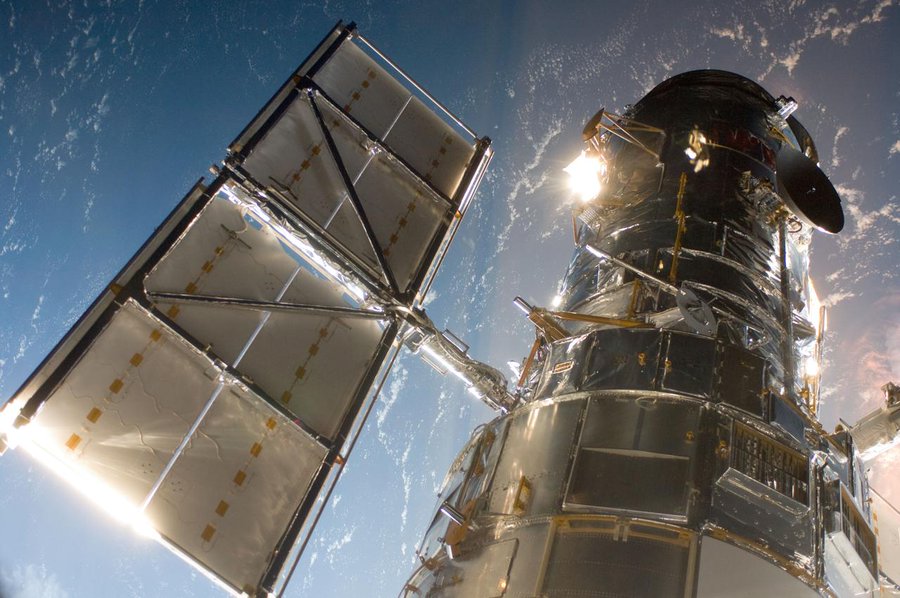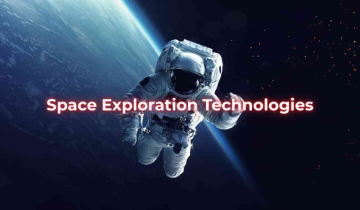Launched in 1990, the Hubble Space Telescope has been a flagship in scientific discovery, bringing breathtaking images and unraveling elements of the mystique within the vast universe. Now, over three decades, great strides in our knowledge about the cosmos—one after another—will lead us from what it is to how galaxies, stars, planets, and even the fabric of space-time grow. Its mission was extraordinary, surpassing its lifetime, allowing continuous scientific discovery and an entirely new view of the universe, inspiring astronomers, scientists, and the general public worldwide with images of the cosmos.
Hubble Space Telescope: Technological Marvel
The Hubble Space Telescope is not an ordinary telescope; it is a technological wonder that orbits to show visions of far-away galaxies, nebulae, and cosmic phenomena that man has never seen.
_1717608298.png)
Held by the space shuttle Discovery’s robotic arm, Hubble hovers over Earth during its deployment in April 1990. In this picture taken through a space shuttle window, Hubble has deployed one of its solar panels but has yet to extend the second.
Optical devices and instrumentation
Due to the mechanisms of its design and superstructure, the Hubble Space Telescope has become one of the most valuable instruments for explore and discover astronomical phenomena.
►Primary Mirror
Hubble's 2.4-meter primary mirror can take sharp images of celestial objects located millions of light-years away. This is one crucial part, designed to gather light with much accuracy.
_1717608529.png)
Prior to installation, technicians inspect the primary mirror of the Hubble Space Telescope.
Scientific Instruments
Hubble houses a suite of instruments that includes state-of-the-art sensitive cameras, spectrographs, and sensors. These tools, in turn, detect the light of different wavelengths, thus allowing the making of detailed observations throughout the entire electromagnetic spectrum.
► Wide Field Camera 3 (WFC3):
WFC3 captures high-resolution images in ultraviolet, visible, and near-infrared light, allowing the study of a wide range of celestial phenomena, from the formation of stars to the evolution of galaxies.
►The Advanced Camera for Surveys (ACS)
ACS is meant for surveying large sky areas; hence, in that sense, it becomes appropriate for deep-field observations and the study of galaxy evolution. Its wide field of coverage allows vast regions of space to be captured with much detail.
_1717609098.png)
►Cosmic Origins Spectrograph (COS)
COS is used to study large-scale structures by probing light from distant galaxies and quasars; this instrument provides critical information on the intergalactic medium and the chemical composition of remote cosmic objects.
►The Space Telescope Imaging Spectrograph (STIS)
STIS provides very high-resolution spectroscopy; this is critical for studies on the physical properties of stars, galaxies, and black holes. The instrument can break light into essential color components so scientists can learn just what things are made of and how these things work in celestial objects.
_1717609341.png)
►Near-Infrared Camera and Multi-Object Spectrometer (NICMOS)
NICMOS allows for near-infrared observations, and therefore, much more detail can be discerned about topics such as star formation and the early universe. This instrument has been proved exceptionally helpful in studying regions of space that are obscured by dust and gas.
►Gyroscopes and Accurate Positioning
Hubble relies on gyroscopes for proper orientation. This ensures the telescope is stabilized and pointed accurately at its targets. Despite recent challenges with its gyroscopes, Hubble continues to operate effectively.
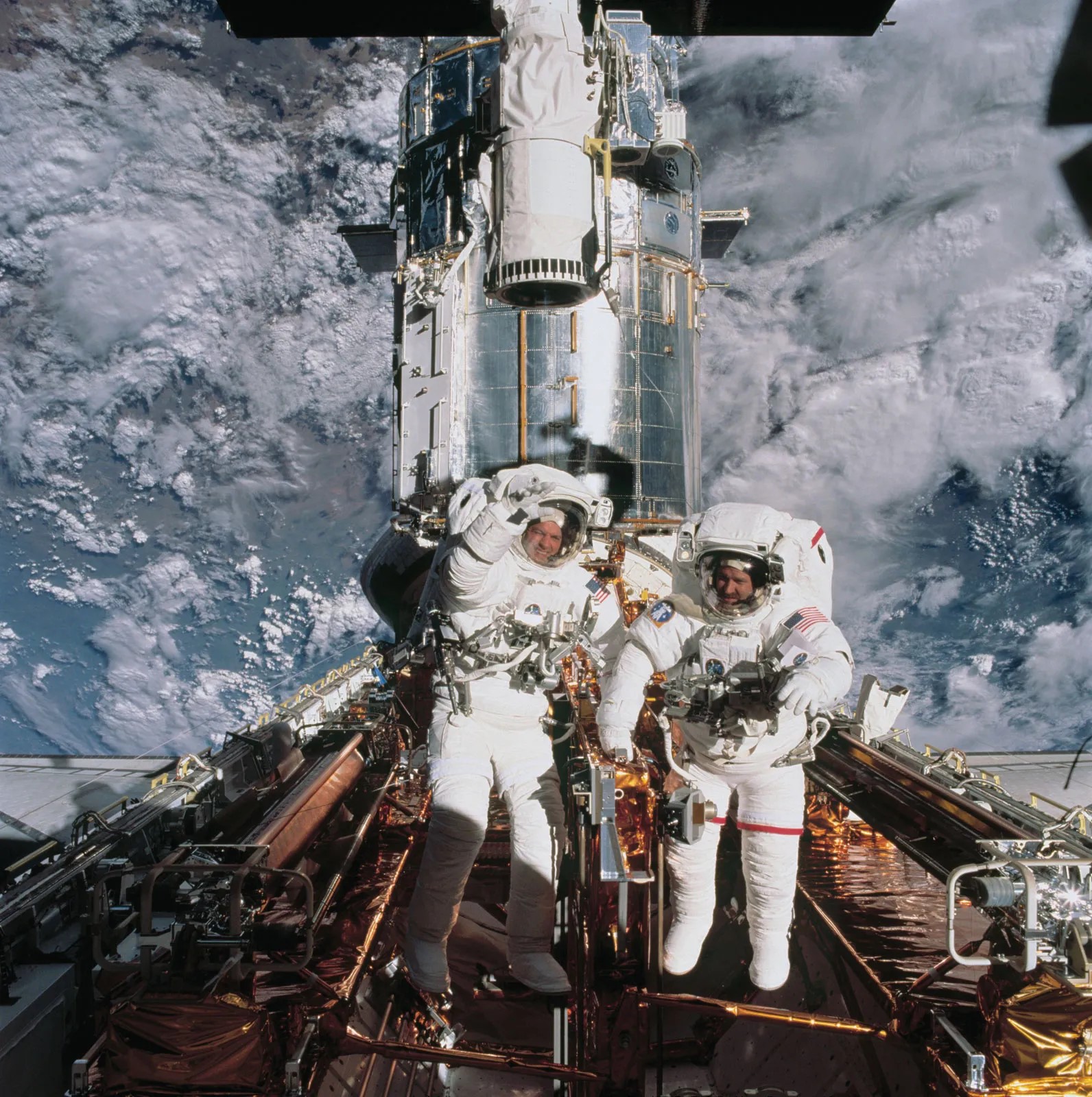
astronauts John Grunsfeld and Richard Linnehan with the Hubble Space Telescope, 2002
►Servicing Missions
There have been over a dozen astronaut servicing missions with hardware upgrades to improve the survival of Hubble and to make it more productive scientifically. These have included the replacement of installed instruments, repair of components, and enhancements of Hubble's capabilities.
Science Techniques and Procedures
Hubble makes use of several techniques through which its groundbreaking discoveries keep on coming.
- Spectroscopy
Hubble splits light into all of its component wavelengths, allowing for an analysis of the chemical composition, temperature, and motion of celestial objects. This makes it possible to gather in-depth inside information on the physical characteristics and behaviors of stars, galaxies, and other cosmic entities.
- Photometry
The light intensity from objects is measured with Hubble, which defines their luminosity, size, and distance. Photometry plays a decisive role in the study of the energy output and characteristics of astronomical bodies.
- Imaging
At high resolution, Hubble can capture a detailed structure of phenomena—starting from planetary atmospheres to very distant galaxies. The images obtained are not only of scientific value but also of an aesthetic impact—showing the beauty of the universe.
Scientific Discoveries: Illuminating the Cosmos
Observations by the Hubble Space Telescope have fundamentally changed how we view the universe. Here are a few of the most critical discoveries:.
♦ Dark Matter Mapping
Hubble has constructed 3-D maps of dark matter distribution, which confirm the gravitational influence of cosmic structures. In other words, these have been the most significant proofs of the existence of dark matter in the universe and its role in forming structures.
♦ Moons of Pluto and Other Cosmic Collisions
Hubble was able to discover two new moons of Pluto (Nix and Hydra), take witness photographs of the traumatic Comet Shoemaker-Levy 9 collision with Jupiter, and take part in the results, broadening the level of our knowledge of the solar system and dynamic processes within it.
♦ Protoplanetary Disks and Exoplanets
Hubble has shown us protoplanetary disks around young stars—indicating that extrasolar worlds are pervasive. It has probed the atmospheres of exoplanets, which is critical for characterizing any potential habitation on a globe and life-supported conditions which lie well beyond Earth.
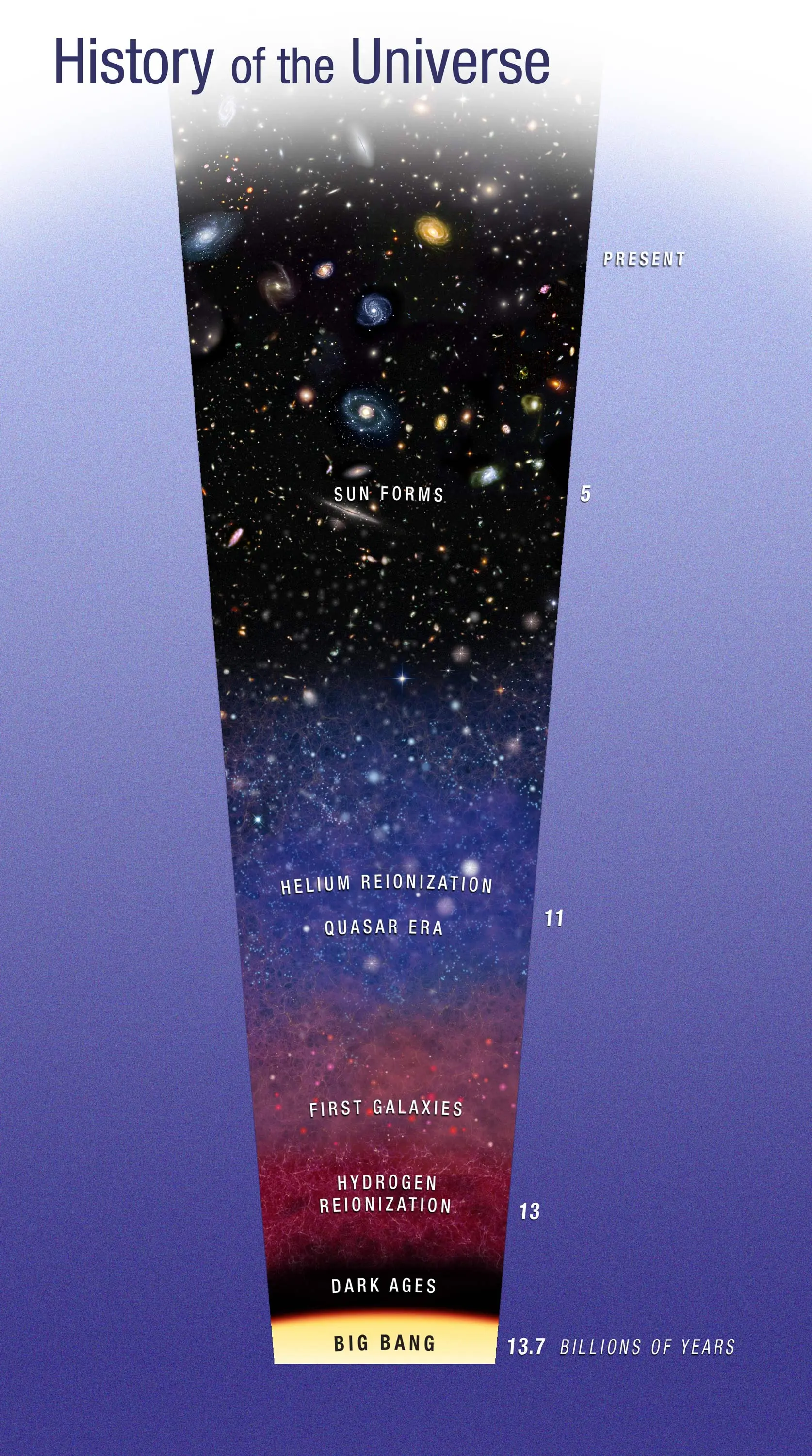
♦ Age of the Universe
Hubble's accurate measurements gave an estimated age of the universe to be about 13.8 billion years, which is one of the most critical discoveries helping cosmology chronologically map out the development of the cosmos.
♦ Black Holes and Star Formation
Hubble provided direct evidence for the existence of supermassive black holes residing in the centers of galaxies, which quite revolutionarily widened our comprehension of galaxy formation and evolution. It would go on to make discoveries related to star formation in distant galaxies that would help with the historical mapping of stellar evolution within the universe.
♦ Expansion of the Universe
These measurements on the velocity of expanding space are referred to as the 'Hubble constant' and have many profound implications, both about dark energy and the fate of this cosmos. These measurements portend a future that is staggering in what it means for the universe.
Amazing Things About Hubble
Here are some, perhaps little known, facts about the Hubble Space Telescope:
- Hubble is a Family of Spy Satellites: The size of the primary mirror is 2.4 meters, and the overall measurement of the telescope is 13.2 m × 4.2 m with a weight of 11,110 kg. If it had eyes to see with, it would quite likely peer at you as you stood in your back garden admiring the stars on a clear moonless night.
- Hubble's background dates from the 1940s, in fact, to an initial proposal by Lyman Spitzer for a large telescope in space. Later, this idea was resurrected and further developed to become the project for the Hubble Space Telescope.
- Original Plan Was to Return Hubble to Earth: The original plan was that Hubble would be returned to Earth and placed in a museum after its service. This plan was dropped with the cancellation of the shuttle service in 2011.
- Hubble's Speed and Orbit: Hubble travels around 17,500 miles per hour as it orbits the Earth. It completes one lap of Earth in about 95 minutes and circles the planet with an orbit that goes 340 miles above the Earth's surface.
- Power Source of Hubble: Each of Hubble's two solar panels provides power. Some of that power is reserved for when Hubble is in Earth's shadow in orbit.
- Hubble's Servicing Missions: Indeed, after the telescope's launch, there were five missions for upgrading the Hubble Space Telescope. The last mission is the space shuttle Atlantis STS-125.
- Hubble's Farthest Observations: Icarus is the most distant star ever observed by Hubble, located about 5 billion light-years away. The farthest galaxy observed is at a distance of 13.3 billion light-years, with the universe being estimated at approximately 13.8 billion years old.
- Hubble has a lot to offer through its findings relating to the universe and other discoveries: dark energy, the universe's age; and the existence of a black hole in the center of most galaxies.
- Hubble's Legacy: Hubble has, indeed, been the most productive scientific instrument in history; more than 21,000 peer-reviewed scientific articles have been written based on its data, inspiring public interest in astronomy and space exploration.
- The Future of Hubble: Despite a lifespan of over three decades now, Hubble is still very much up and at work, still making discoveries. You are expected to keep ticking until 2030.
Global Impact: Out of the Science
Hubble has reached far beyond discoveries in natural science.
- International Collaboration: Scientists from every corner of the world use Hubble's data, promoting global cooperation in the research done in space. Such collaboration has brought several radical findings worldwide, making it possible for humankind to explore the cosmos more unitedly.
- Educational Outreach: The images taken by Hubble inspire students and educators alike, creating the next generation of scientists. There are also several educational programs and resources based on Hubble's findings, offering insight into the wonders of the universe.
- Policy and Funding: The success of Hubble shapes space policy and funding decisions, stressing that the investment should be long-term for exploration. Its accomplishments illustrate the value of continuous scientific inquiry and the benefits of global cooperation.
- Cultural and Societal Impact: From Hubble's discoveries, so many diverse ways have been inspired, such as finding a place in art, literature, and popular culture through humanity's general fascination with the cosmos and our sense of self within it. Its images have become symbolic of our quest to understand the universe.
- Making Positive Impact : The success of Hubble inspires future scientists and engineers, indicating that great things in science have been done by those who kept trying, developing, and asking. The telescope's legacy leaves behind a beacon to inspire the greatest astronomers and space enthusiasts.
Hubble Inspiring the James Webb Space Telescope
The work of Hubble has, therefore, become the blueprint for advanced development into its inheritor, the James Webb Space Telescope (JWST). While it will observe the universe through the infrared wavelengths, JWST will look backward further in time and snap pictures of the first galaxies and stars to take shape.
- Enhanced Resolution: Its 6.5-meter mirror will allow much higher resolution than Hubble, enabling the observation of a considerably higher amount of detail. This will offer—unprecedented clarity for scientists to observe the early universe.
- Infrared Capabilities : Hubble primarily sees in visible and ultraviolet light, JWST will be mainly an infrared observatory; thus, it can see through cosmic dust and view the earliest, most distant objects. This feature is essential for understanding how stars and galaxies form.
- Improved Instruments : Building on Hubble's heritage, JWST will carry advanced instruments, including the Near Infrared Camera (NIRCam) and the Mid-Infrared Instrument (MIRI), providing extraordinary sensitivity and impressive detail. These instruments will expand our ability to explore the cosmos in greater detail. Longevity in the JWST is built for at least a decade to observe time and answering fundamental questions in space.
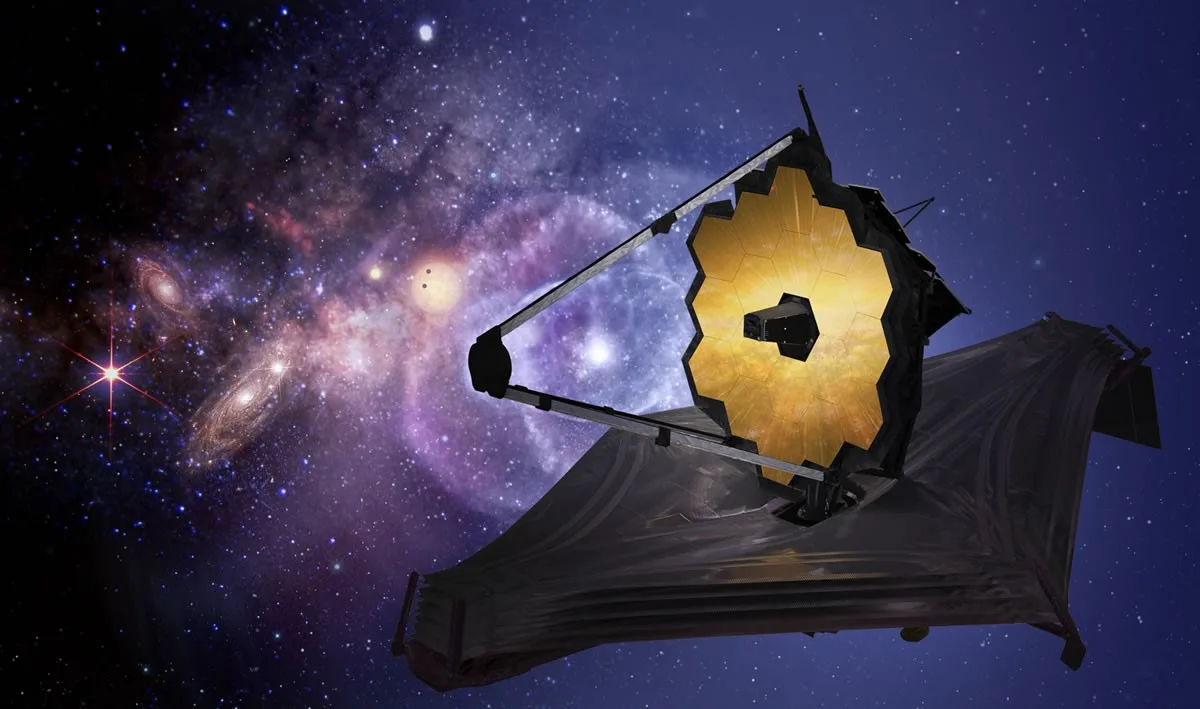
It's long mission life will afford an enormous amount of chance for making discoveries and the development of new understanding about the universe.
Conclusion and Future Directions
As Hubble nears its retirement, the legacy of wonder, curiosity, and an enriched reverence for the cosmos lives on. The Hubble Space Telescope—our window into the universe—is a monument to human ingenuity and our insatiable thirst for knowledge. Future space telescopes, like the James Webb Space Telescope, will push farther than Hubble has gone before and unlock discoveries in a whole new frontier.
ⒸCopyright 2024. All Rights Reserved Powered by Vygr Media.

